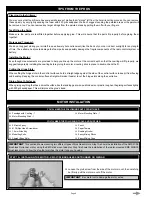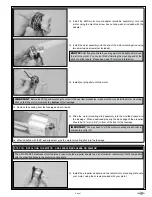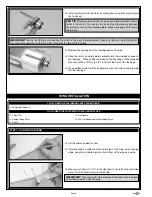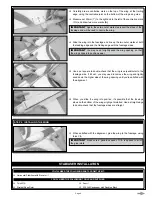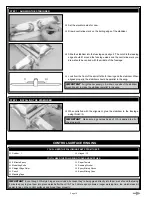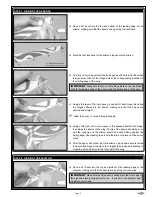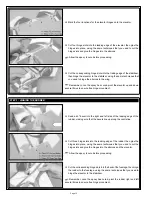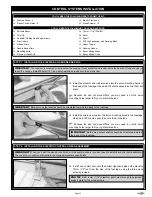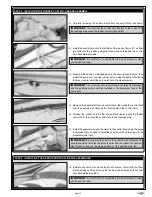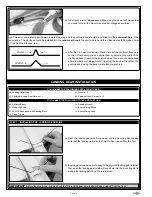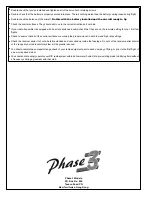
Page 20
l
Double-check that you've installed and tightened all of the servo horn retaining screws.
l
Double-check that the battery is properly secured into place. There's nothing worse than the battery coming loose during flight.
l
Double-check the balance of the aircraft.
Do this with the battery installed and the aircraft ready to fly.
l
Check the control surfaces. They should all move in the correct direction and not bind.
l
If your radio transmitter is equipped with dual rate switches, double-check that they are on the low-rate setting for your first few
flights.
l
Check to ensure that all of the control surfaces are moving the proper amount in both low and high rate settings.
l
Check the receiver aerial. It should be fully extended and not coiled up inside the fuselage. Do not cut the receiver aerial shorter
or the range of your radio control system will be greatly reduced.
l
You should complete a successful range check of your radio equipment prior to each new day of flying, or prior to the first flight of
a new or repaired model.
l
You should not knowingly operate your R/C radio system within 4 kilometers (3 miles) of a pre-existing model club flying field without
a frequency sharing agreement with that club.
Phase 3 Models,
P.O. Box No. 402,
texaco road PO,
New territories, Hong Kong.

